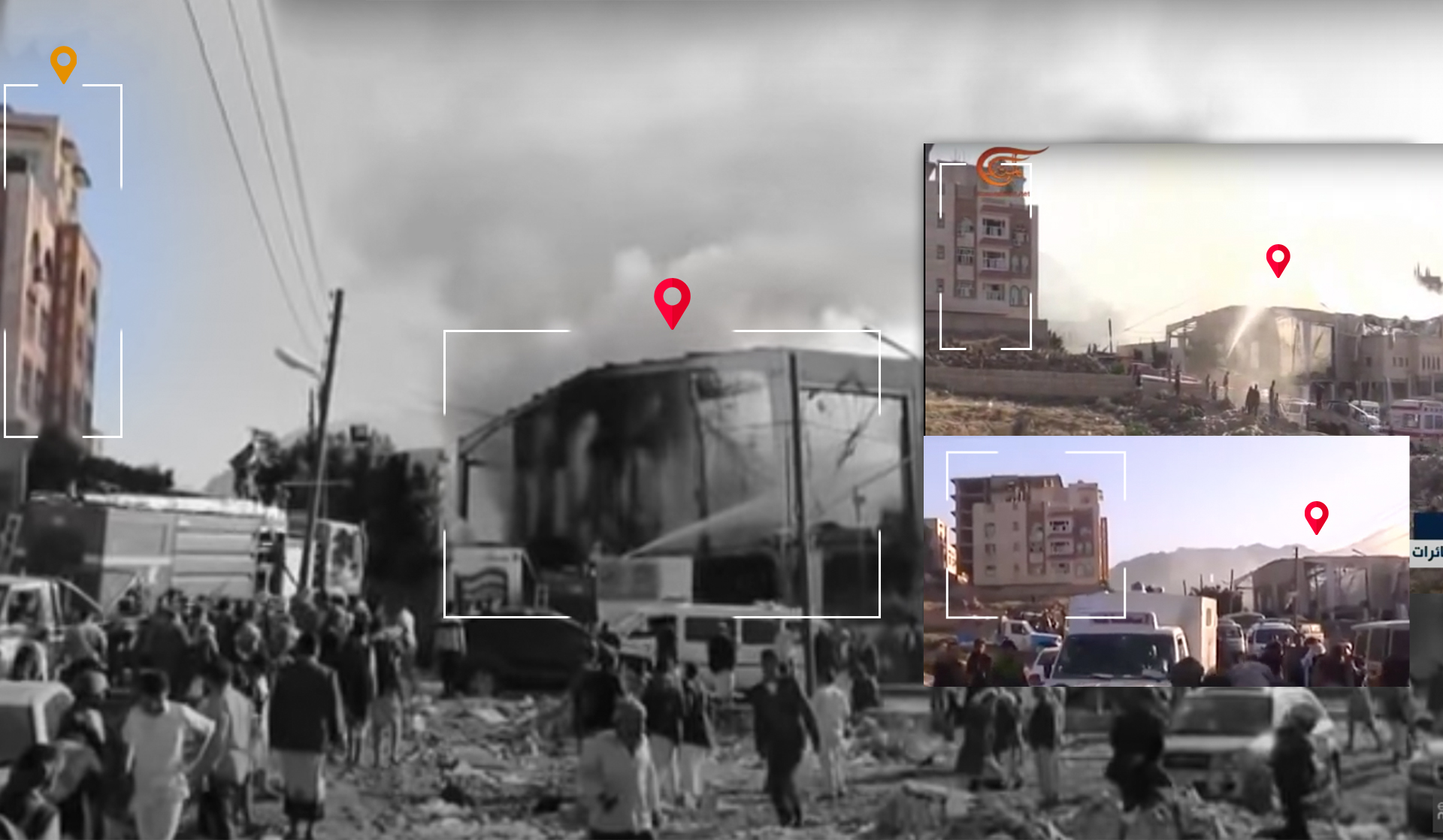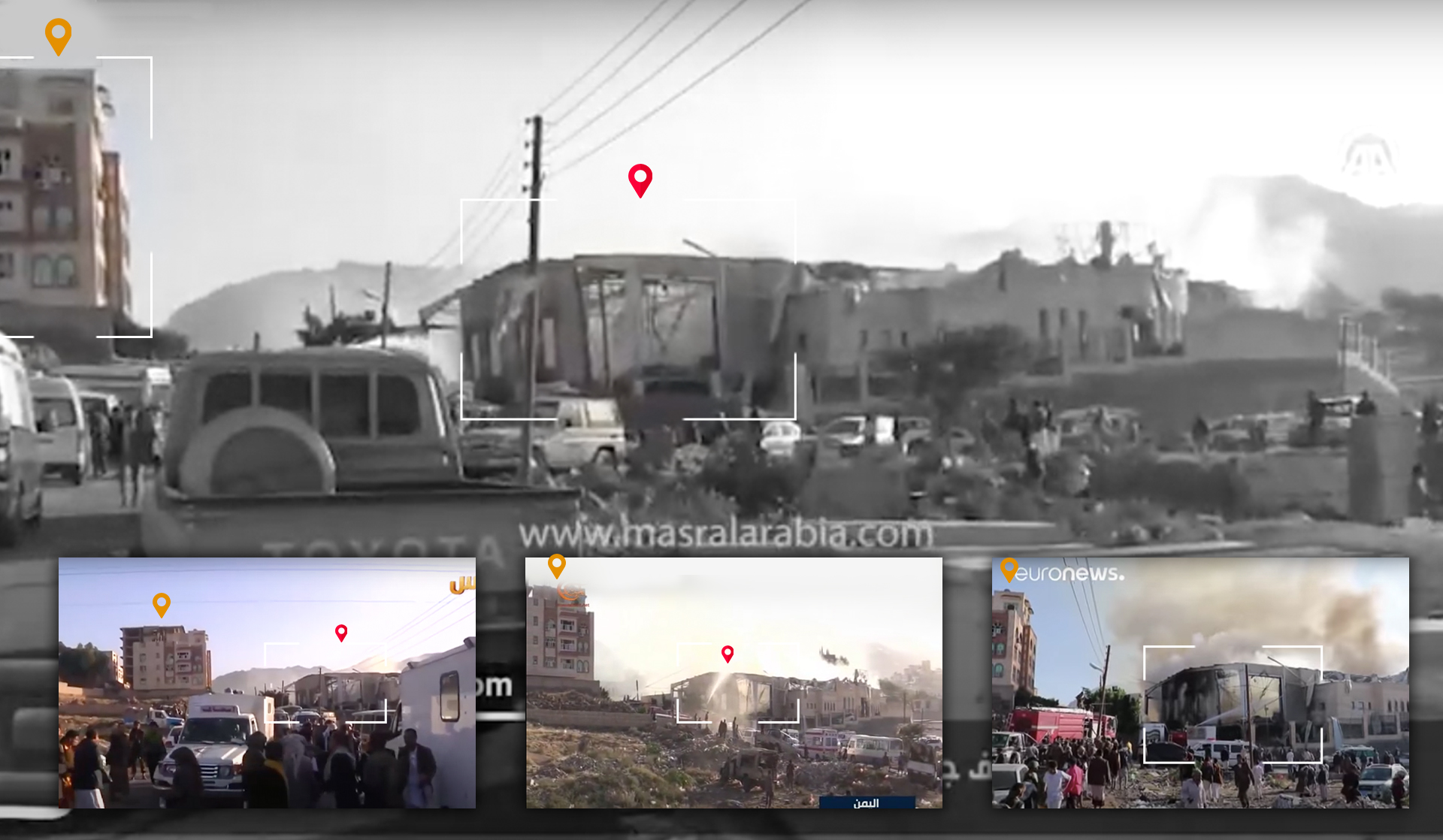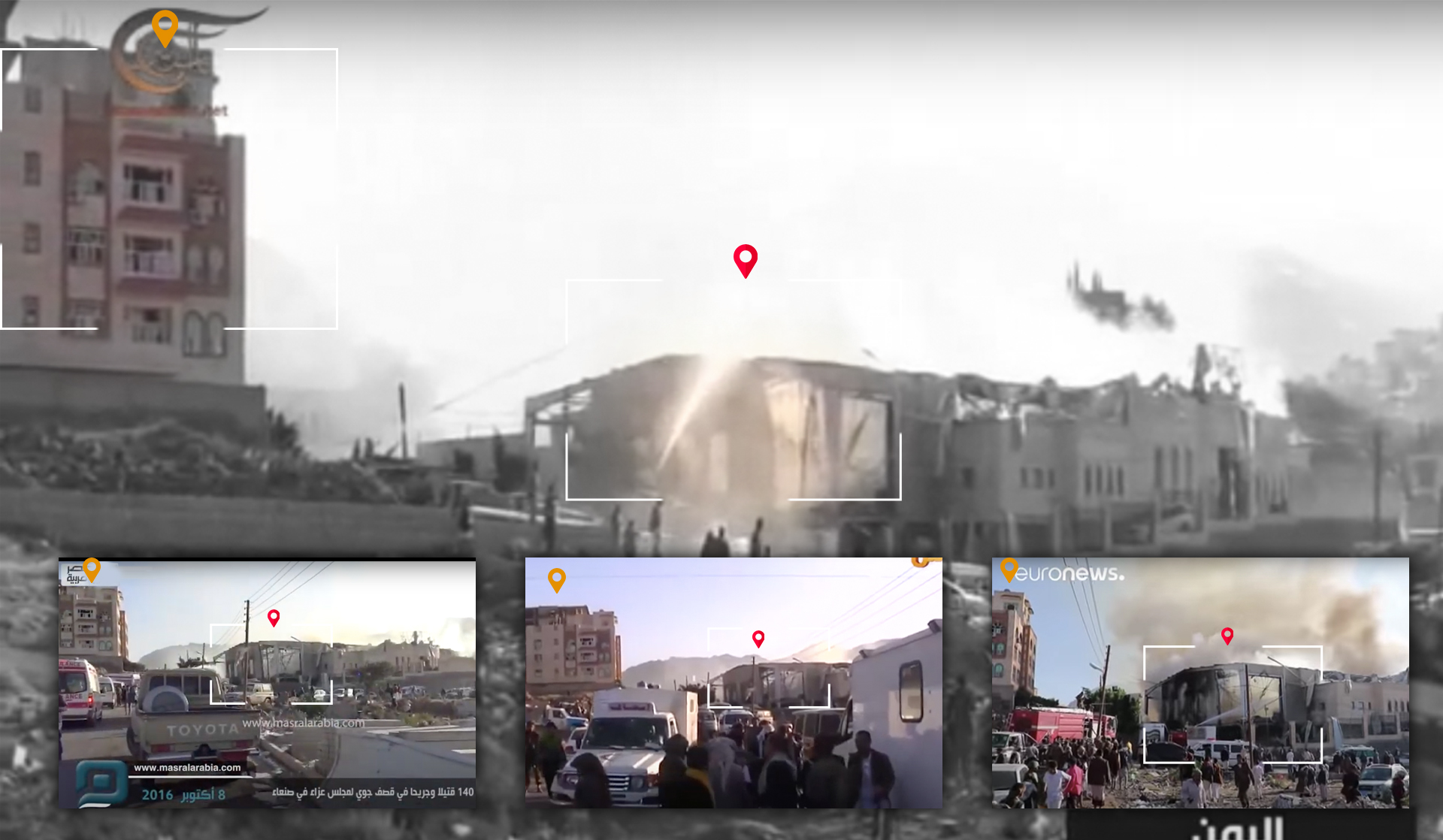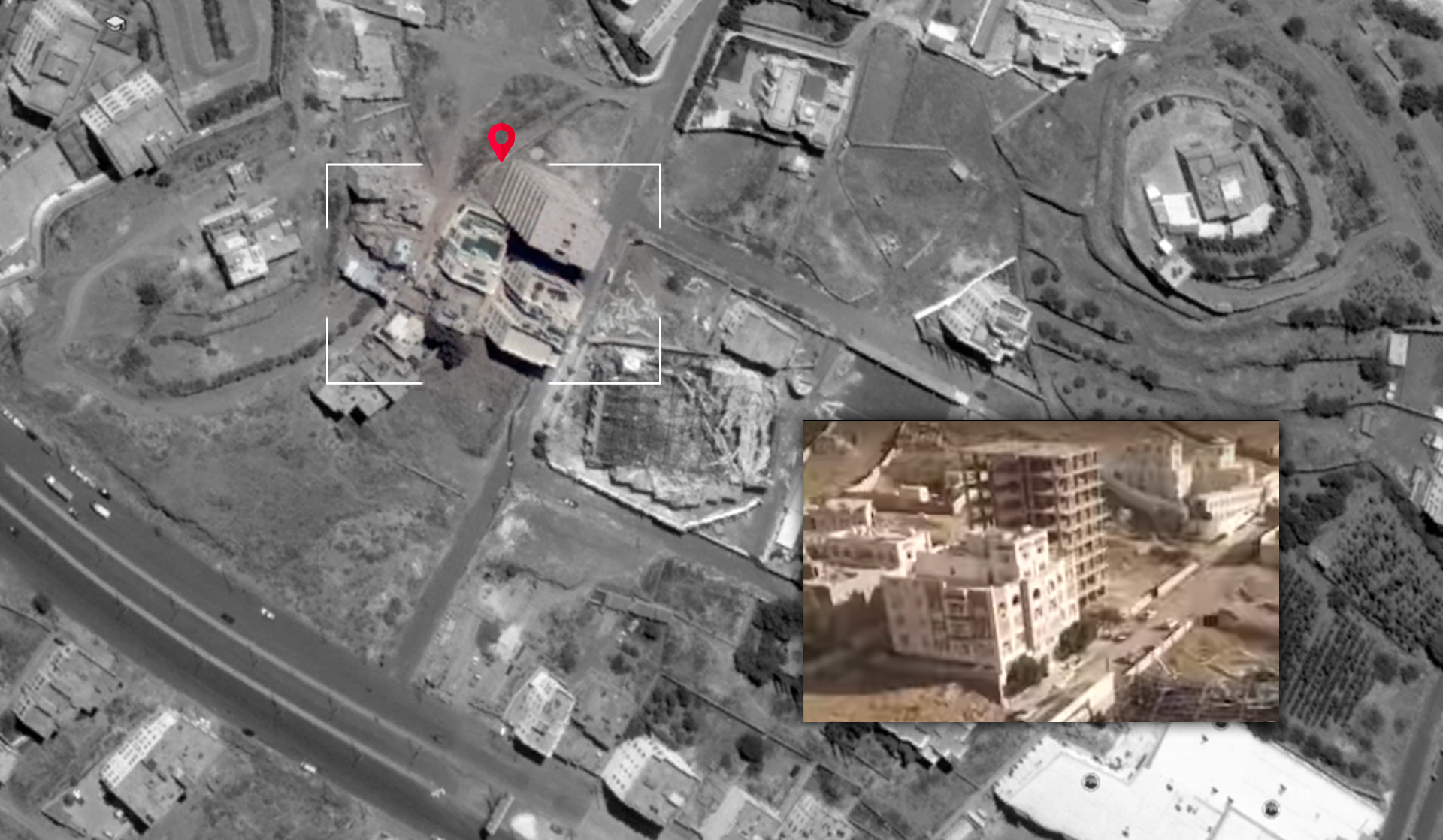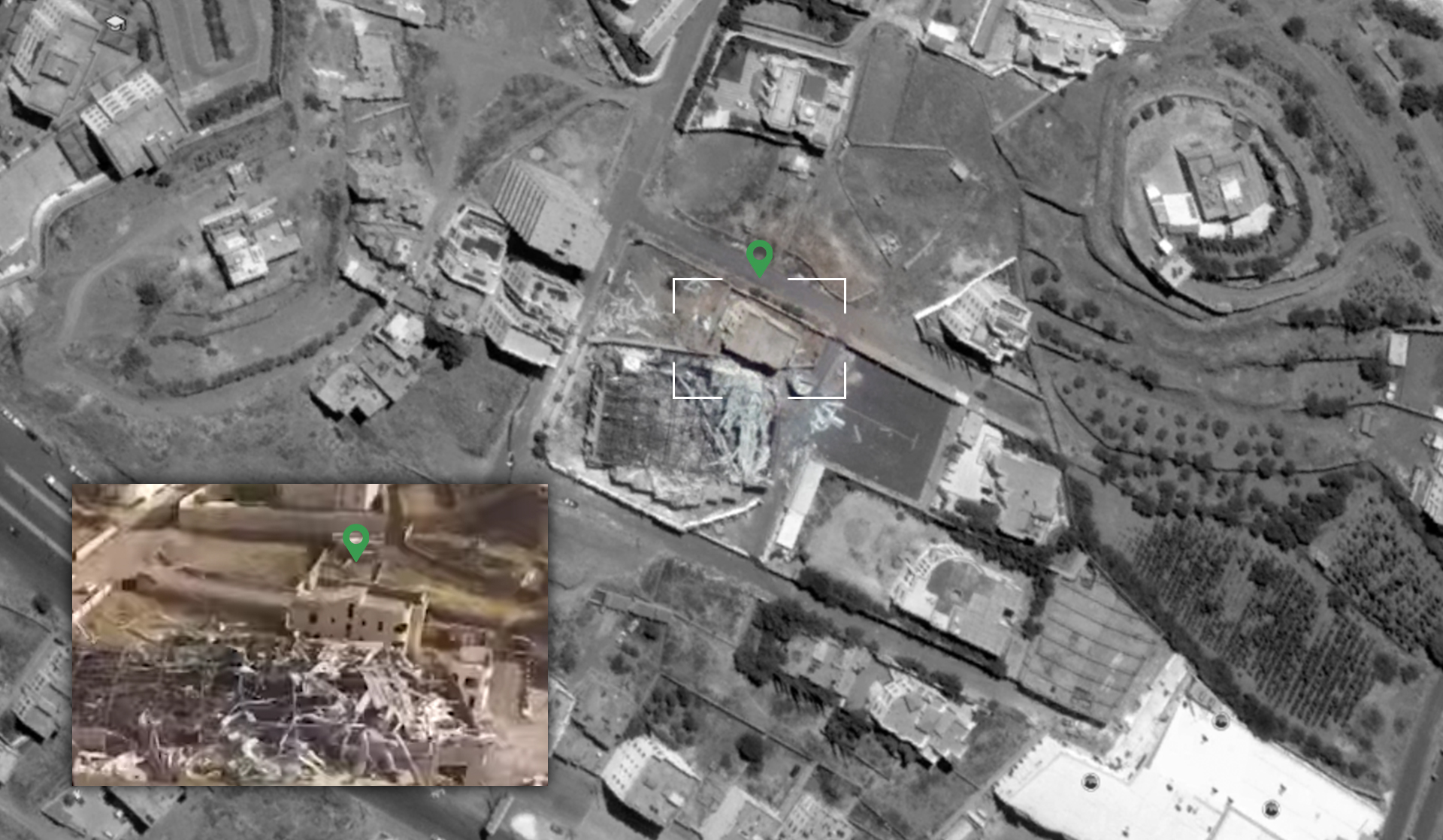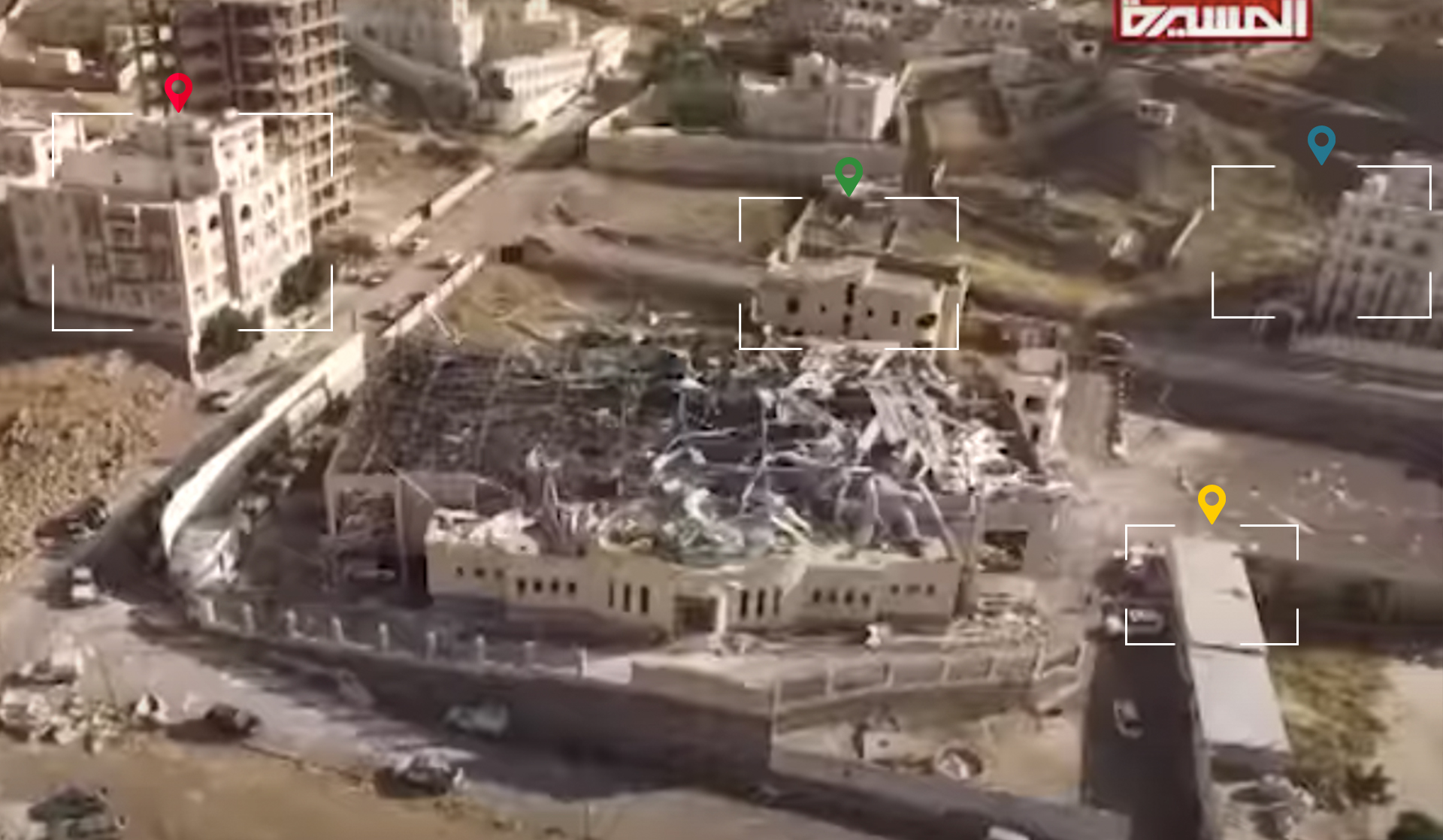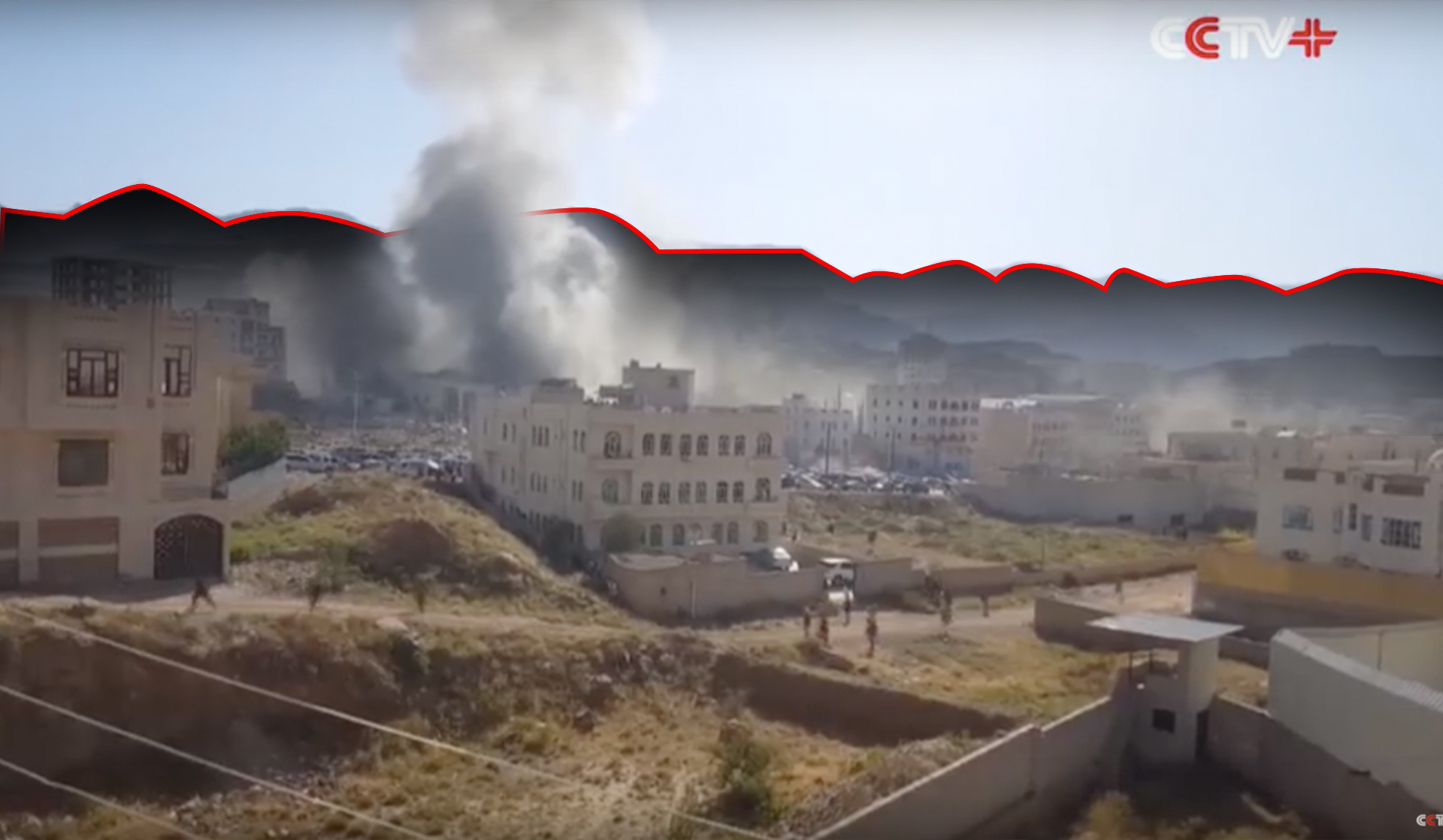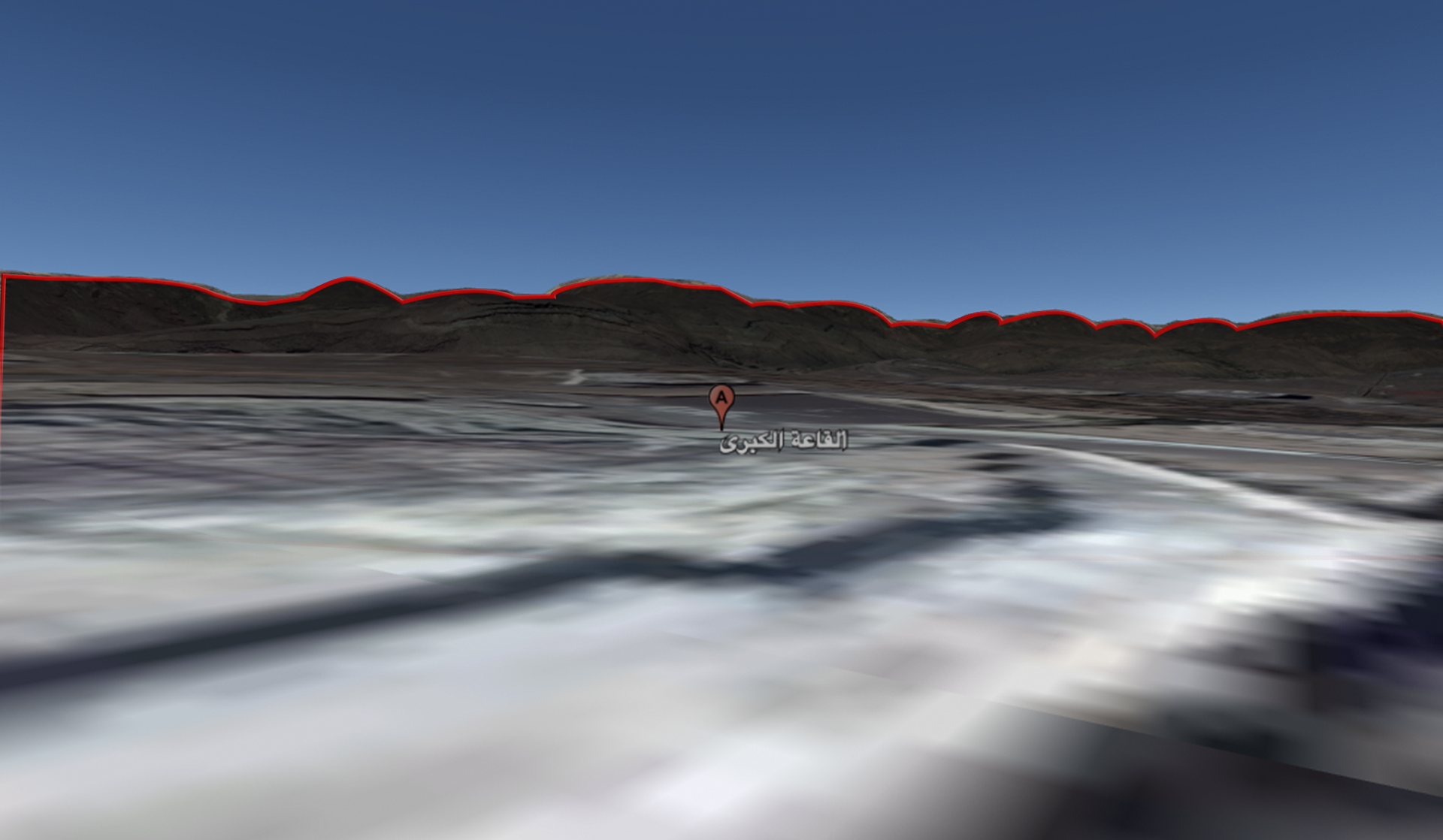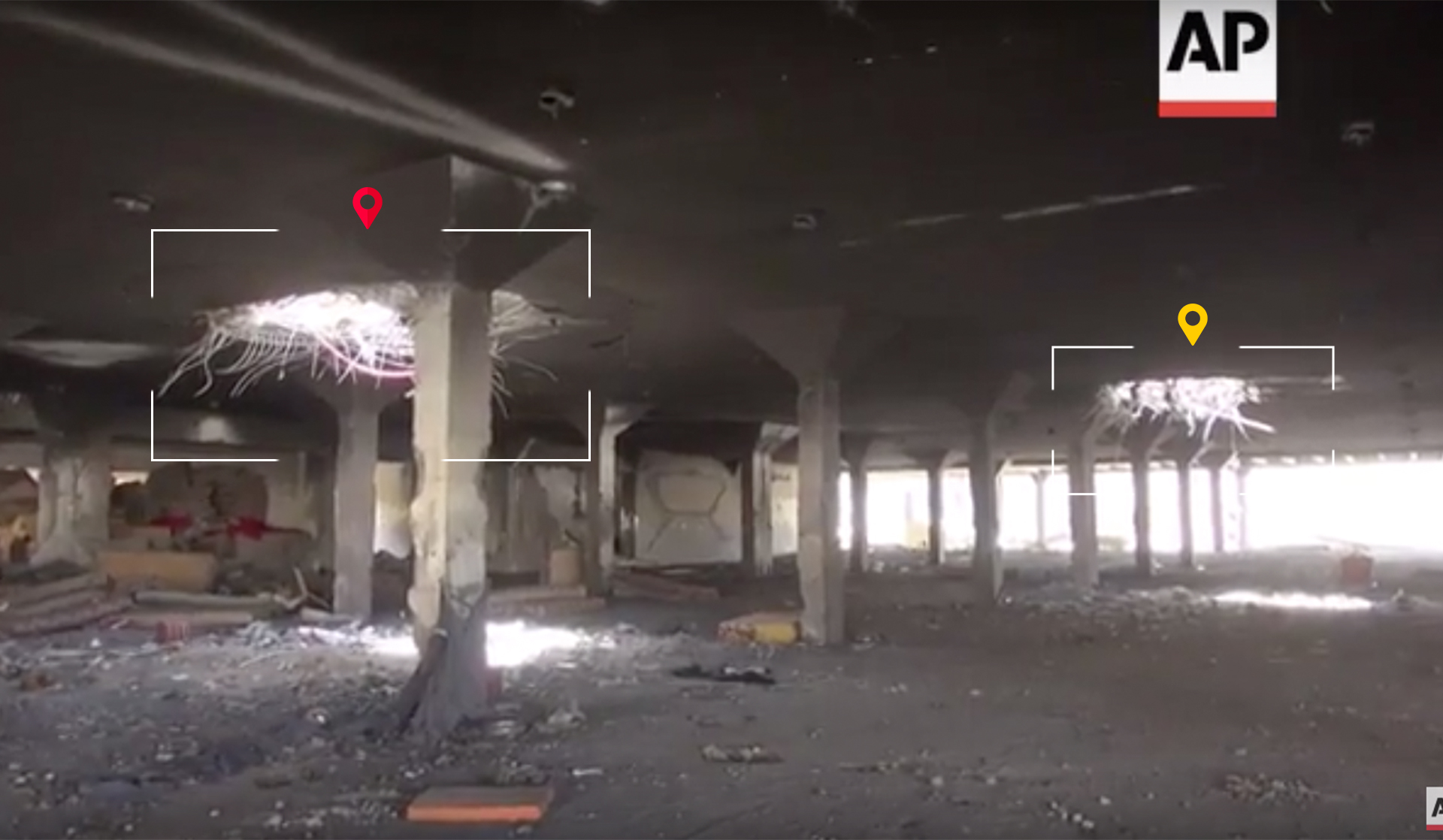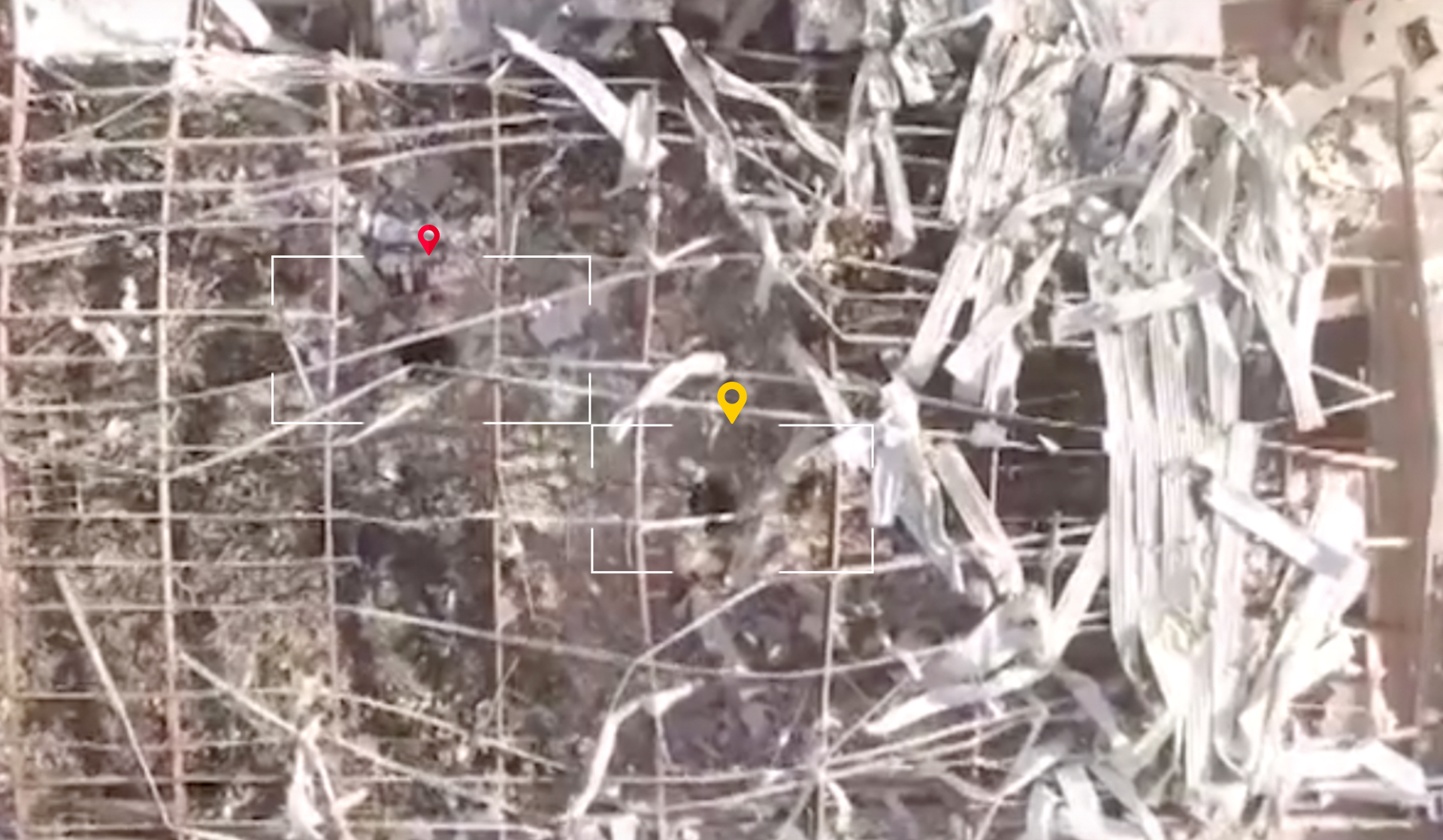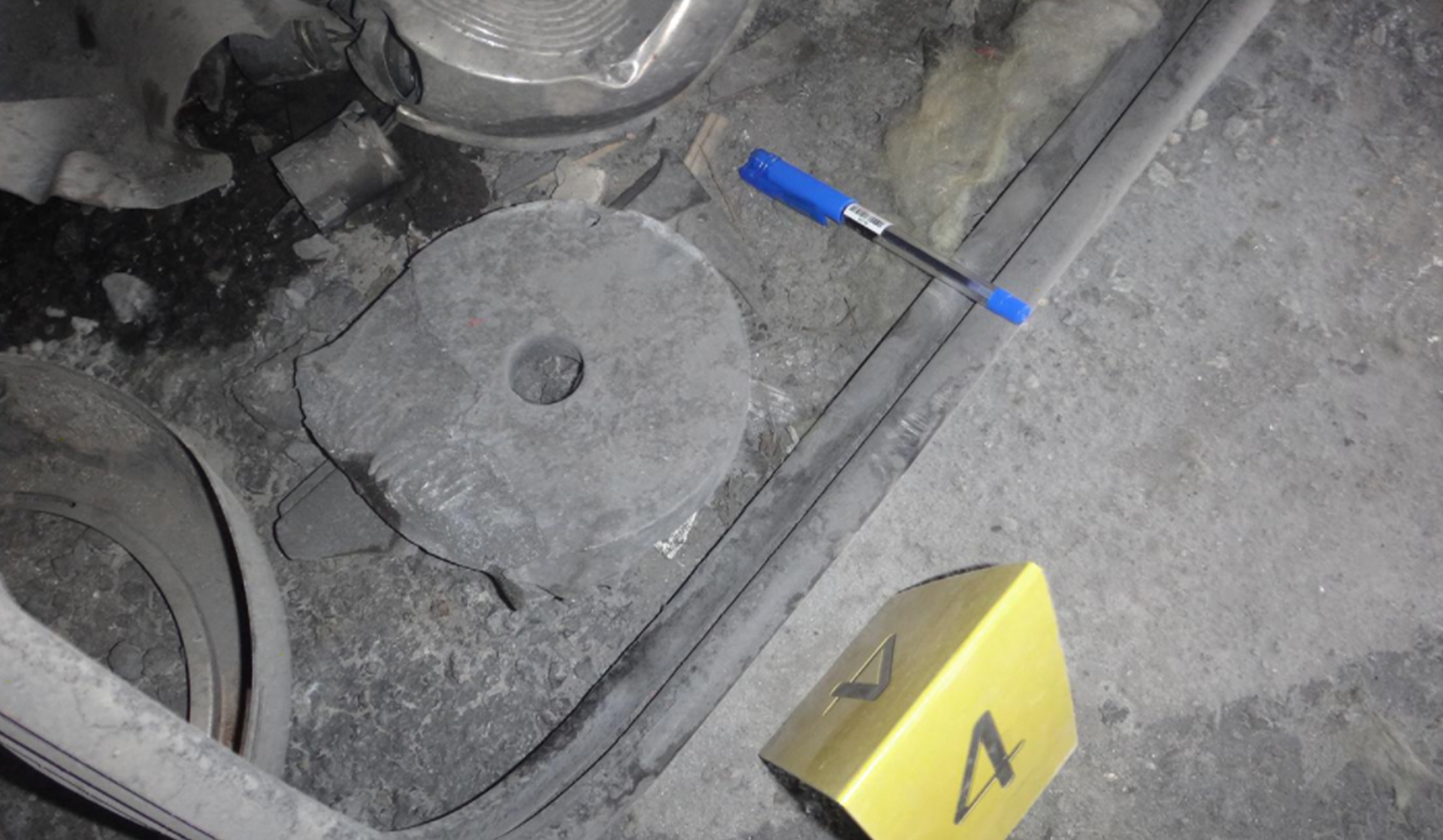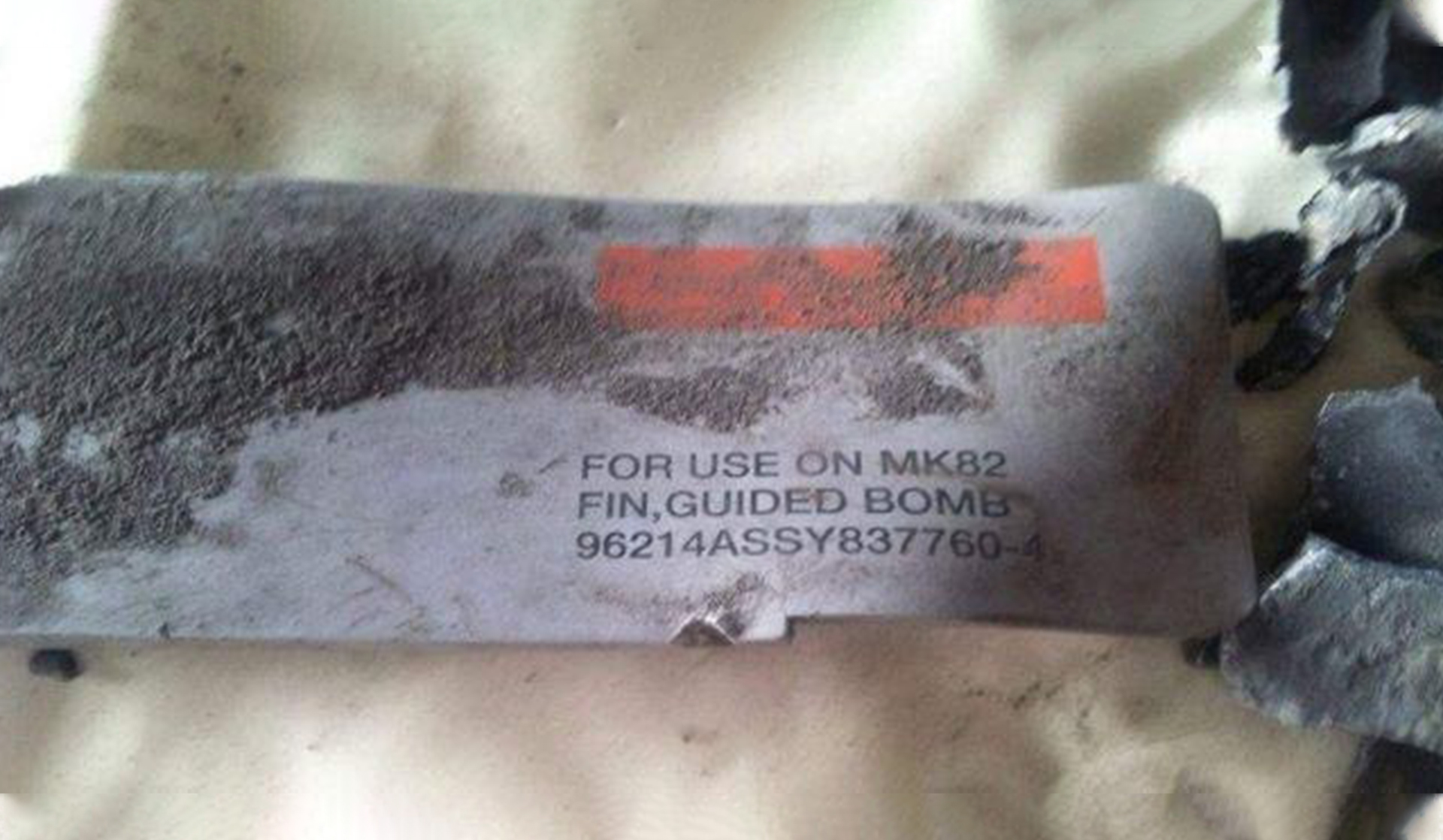Print Article
About the incident: Attacks on the Grand hall in Sana’a
- The location of the attack: the capital, Sana’a
- Date: October 8, 2016.
- Time of Attack: Around 15:20 in the afternoon
- Material damage: Two craters in the hall’s ceiling, several cars at the hall’s parking were burnt
- Type of attack: Airstrikes
- Weapons used: US-made GBU-12 Paveway II 500-pound bombs
- Potentially responsible: Saudi-led coalition warplanes
Attacks on the Grand Hall in Sanaa
Four years have passed since the attack on the Grand Hall located in Yemen’s capital, Sana’a. On October 8, 2016, news sites and social media platforms circulated news, pictures, and videos of the attack by the Saudi led coalition forces on the Great Hall in the capital Sana’a. The Grand Hall was hit by two airstrikes with the first airstrike targeting the location at about 15:20 in the afternoon local time and the second airstrike hitting the hall seven minutes later at 15:27. Many people were at the hall at that time of the attack. The airstrikes hit during a funeral ceremony for the death of Jalal Al-Ruwaishan’s father, who had been appointed as the interior minister by the Houthis who control Sanaa.
Given that the location hit is a civilian facility and civilians were killed and injured in this attack, this investigation aims to understand the details of the incident.
After collecting and analyzing images and visual evidence published on social media and news sites,Yemeni Archive verified that the Grand Hall (the Occasions Hall) located at Al Khamseen Street in the Al Sabeen District was targeted with several airstrikes on October 8, 2016. The attack occurred during a funeral ceremony. Many civilians were killed. After first denying the targeting, the Saudi-led Joint Incidents Assessment Team (JIAT) claimed in a statement, that the raid took place without the final approval of the coalition leadership. This contradicts statements from the advisor to the Supreme Commander of the Armed Forces, Major General Muhammad Ali Al-Maqdishi who confirmed in the documentary ”Death in Mourning” that: “The members of the coalition are always present with the Yemeni army in the operations rooms so there is coordination between all of us in giving the orders on striking targets, and every decision issued must pass through the coalition forces.” Contradictions between the Saudi led Joint Incidents Assessment Team (JIAT) and coalition advisors suggests that the full responsibility for targeting the Grand Hall site, which killed civilians, rests with the Saudi-led coalition forces.
The Saudi-led Joint Incidents Assessment Team (JIAT) claimed in its aforementioned statement that it will take the necessary legal measures against the people who caused the incident and work to provide appropriate compensation to the families of the victims and those affected.
About the area
In 2014, the Houthi forces took control of Sanaa, the political capital of the Republic of Yemen, where ministries, institutions, government interests and political bodies are concentrated. The capital’s secretariat is divided administratively into ten directorates. This includes the Al Sabeen district, which is the largest of the capital directorates in terms of population density. The Al Sabeen district is located in southern Sanaa. On October 8, 2016, the Saudi led coalition bombed a funeral ceremony in the Grand Hall located on Al-Khamseen Street in the Haddah neighborhood of the Al Sabeen district, south of the capital Sanaa.
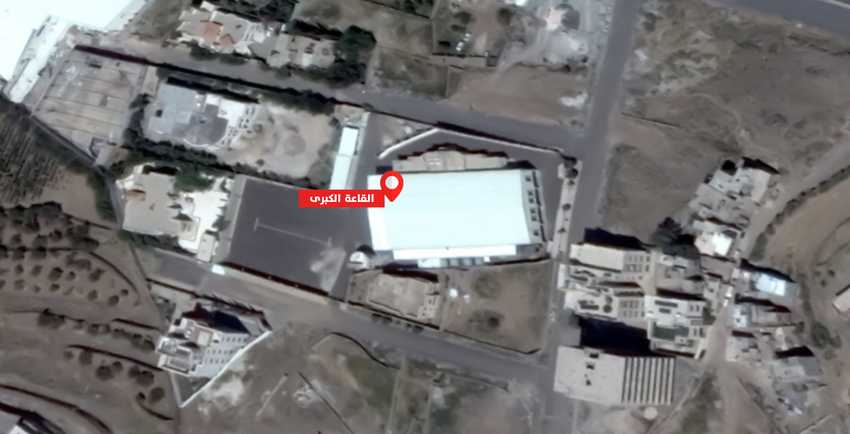 Satellite image by Google Earth Pro shows the Grand Hall site
Satellite image by Google Earth Pro shows the Grand Hall site
What happened
On October 7, 2016, one day before the attack, Ammar Al-Ruwaishan published on his personal Facebook page the news of the death of his uncle Ali bin Ali Al-Ruwaishan and that the funeral ceremonies will take place on Saturday and Sunday, October 7 and 8, 2016 in the Grand Hall on Al-Khamseen Street.
The Saudi-led coalition forces were aware that the funeral ceremony would take place in the Grand Hall, and informants of the coalition forces had provided the operating rooms with the latest developments on the attendees, according to the journalist Nawal Al-Maqhafi in her documentary ”Death in Mourning.”
On the day of the funeral ceremony, news networks and activists’ pages circulated on social media alerts of an attack with two airstrikes by the Saudi-led coalition forces on the Grand Hall. The attack can be seen in a video showing smoke rising from the first raid and the moment the missile hit the grand hall again in a second airstrike. As mentioned earlier, the two airstrikes hit during the funeral ceremony of the interior minister’s father Jalal al-Ruwaishan, appointed by the Houthis, killing and injuring many people, including public figures in the political milieu.
The RT Arabic channel published on its YouTube account a testimony of witness Doctor Muhammad Al-Hamis who said: “We heard the first explosion and we went out and saw dozens of people leaving the hall, some of them bloodstained, some of them have lost their leg, some have lost their hand, and some have lost a lot of blood. They were not in dozens but in the hundreds.” Then he added, “When people came to help the injured, a second airstrike hit the place. It was the largest hall in Sanaa and it was crowded with people.”
The next day, Al-Yaman TV broadcasted a special coverage in front of the Grand Hall, in which a number of people were killed and injured as a result of the bombing. Many eyewitness testimonies were shown talking about the attack and when the two missiles targeted the site. Another video shows the impact of the attack inside the Grand Hall after it was targeted by warplanes with the first missile and before it was targeted by the second missile.
Two years after the incident, on n October 28, 2018, Yusef Adel Al Emad, a survivor of the attack, said on the”Survivors” program broadcasted by the Al-Lahzah TV channel: “I think that the last call I received was at 03:24 in the afternoon, according to what I saw on the phone. It was one of my relatives asking me where the Grand hall is located, and when I hung up, I don’t remember what happened next. Then the first strike happened.”
In a detailed report on the incident published by Al-Yaman TV, another survivor of the attack and relative of Ali bin Ali Al-Ruwaishan, Nasr Al-Ruwaishan, stated: “At two o’clock, the mourners began to arrive at the hall, and the hall was filled with people within one hour, and was only getting more crowded with those arriving late.”, Then he added, “There were more than two thousand people crowded into the hall. At about 15:20 in the afternoon, we were surprised by a missile that hit above the hall and fell directly in the middle of it near the northern side of its entrance, where we were standing to receive the mourners. The pressure of the missile pushed me a few meters towards the hall gate.” I felt the fire on my clothes. ” Then Al-Ruwaishan continued in the same video: “While I was leaving the hall, I saw the paramedics, and Amin Ali Mashli Al-Ruwaishan, enter to treat the injured, but not get out because of a second missile, which aimed to finish off the survivors and target the paramedics.”
Al-Arabi newspaper published a report about the incident in which Muhammad Al-Masuri, an eyewitness, mentions the following: “I headed with Professor Muhammad Al-Bakoli towards the Grand Hall on Al-Khamseen Street in the capital, Sana’a. We arrived at the entrance to the parking lot in the middle of Al-Khamseen Street, which is filled with hundreds of cars. People were coming in and out of the hall, and in very large numbers, because the funeral was for one day, according to what the media reported the previous day. At exactly 15:20 - 15:25 in the afternoon, on Saturday, October 8, 2016 as I parked the car and got ready to get out to go towards the hall that was on our left, we heard the sound of the first missile exploding, and it was different from the explosions we are accustomed to hearing daily because we were so close to the impact site. Immediately, Professor Muhammad Al-Bakoli said ‘Where is this bombing?’ At that moment, we saw the funeral hall flying up into the air. We saw the ceiling of the hall flying into the sky surrounded by a very large and dense amount of dust and smoke, rising more and more. The iron pillars and many parts of the hangar (the ceiling of the hall) were flying inside this huge smoke and dust, where also the remains of the martyrs and the wounded flying inside it.”
In one of its news reports on the attack, Al-Hurra TV published an interview with a civilian injured by the blasts, who said: “The missile fell and fire spread everywhere. I was under the fire, and I protected my face from the fire with my hand. So my hand, head and leg were burned. Of every family there are two or three - injured - including children, adults and the elderly. ”
Determining the time of the attack
The news of the targeting of the Grand Hall continued after 15:00 afternoon. To ruther verify the moment the attack occurred, Yemeni Archive analyzed the timing of the posts related to targeting through the Unix Timestamp tool.
The first post about the incident was published by the journalist and political activist, Sadiq Al-Daghar, on his Facebook page, in which he talked about the bombing of the Grand Hall, at exactly 15:44 local time.

On her Facebook page, Abeer Abu Talib published a post about the incident at 15:45 local time.

Yemeni writer and journalist Abbas Al-Dhali also posted a video on his personal Twitter account of the Grand Hall after the targeting, showing smoke rising from the hall at exactly 15:39 local time.
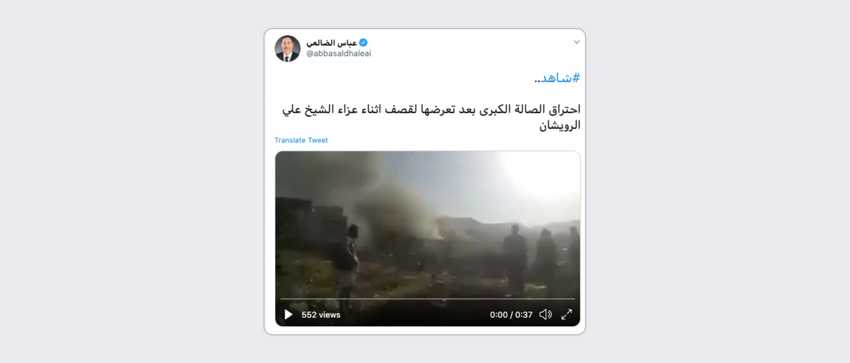
The Yemen News website also published on Twitter a video from inside the hall after the targeting at 19:11 local time, showing the scattered body parts of those killed and civilians trying to rescue the injured. The video also shows the crater left by one of the strikes on the hall.
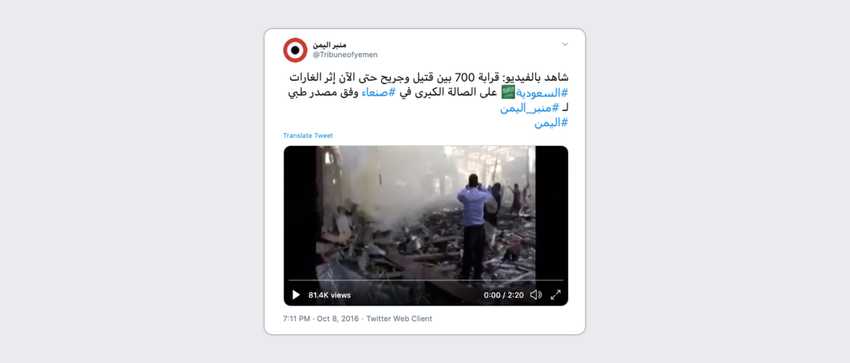
The location of the attack
After analyzing the visual evidence and landmarks from open source content and matching them with satellite images, it became clear that the attack targeted the Grand Hall in Sanaa, located specifically in the Al Sabeen district in the Haddah neighborhood on al-Khamseen Street at the coordinates 15.289537, 44.200518.
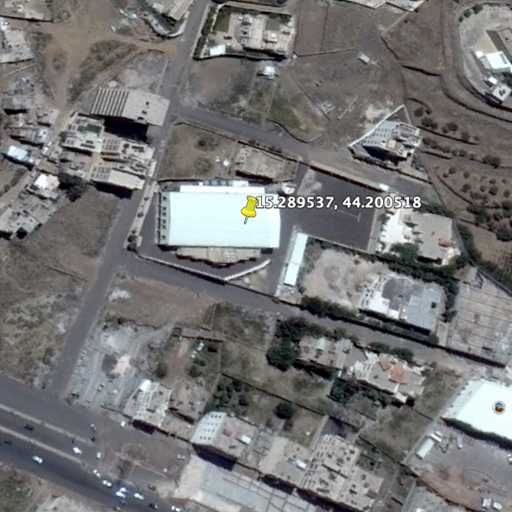
Landmarks including a house located next to the hall and smoke rising from the hall match in scenes of videos published byEuronews channel, Masr Al Arabiya TV channel, Al Mayadeen TV channel and Belqis news channel.
The Ansar Allah channel, Al Masirah, also published aerial shots of the Grand Hall after the incident. The Yemeni Archive team took a screenshot of the video and compared it with a satellite image fromGoogle Earth in order to identify and locate the hall and its adjacent buildings.
CCTV News additionally published a video on its YouTube channel, after the attack on the Grand hall. The Yemeni Archive team took a snapshot of the video showing the mountainous terrain behind the hall and compared it with a satellite image from Google Earth in order to better determine the location of the attack.
The Impact of the attack
Through the videos that were published showing the attack on the Grand Hall, the Yemeni Archive team noticed that the buildings adjacent to the hall were not destroyed, but rather had minor damage with cars nearby were burned in the parking lots of the hall. Additionally, the two missiles left two craters in the ceiling of the hall that appeared in a video published by Al Masirah Channel on YouTube, further confirming that the bombing was from above. More than a year after the incident, on October 13, 2017, the Associated Press published on its YouTube channel a video showing a shot of the two craters after the bombing. Aar aar newspaper also published photos of the burning cars on its website after the incident.
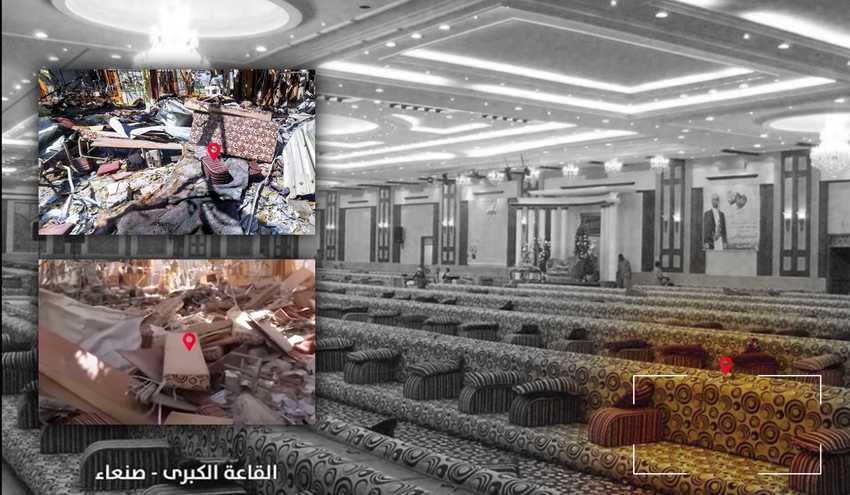 Pictures from the news site “Houna Taiz ” and Google Earth of the Grand Hall’s inside from before the targeting match a picture taken from a video published by Al-Masirah TV of the hall after the targeting. These images share the same landmarks of the Arab Majlis inside the hall
Pictures from the news site “Houna Taiz ” and Google Earth of the Grand Hall’s inside from before the targeting match a picture taken from a video published by Al-Masirah TV of the hall after the targeting. These images share the same landmarks of the Arab Majlis inside the hall
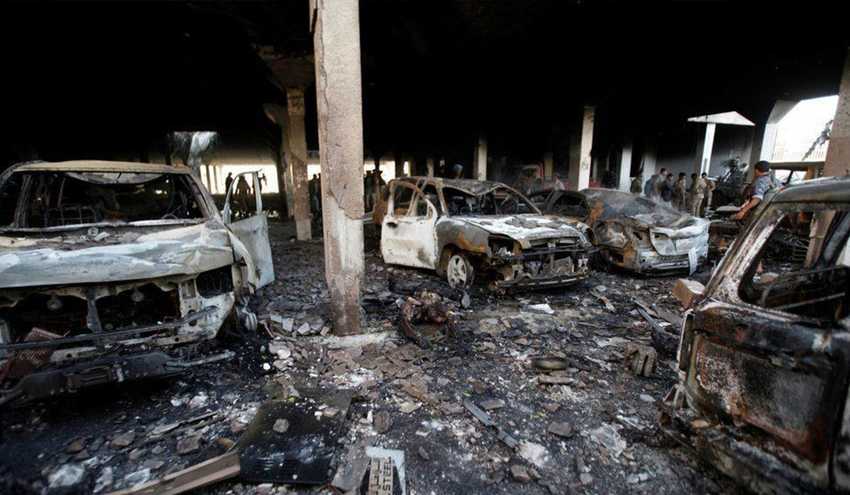 A picture of the burning cars in the parking lot of the hall
A picture of the burning cars in the parking lot of the hall
Munitions used in the attack
Al-Masirah TV published a video showing remnants of the bombs used in the two airstrikes. These remnants included manufacturing labels.. In a report by Human Rights Watch on the incident, the organization determined that the munitions used in the bombing were GBU-12 Paveway II 500-pound laser-guided bombs manufactured by the American company Raytheon,. The American company Raytheon is considered one of the most important American arms manufacturer and is headquartered in the Saudi Arabian capital, Riyadh.
The victims
The impact of the attacks were not limited to the destruction of the hall and damage to the neighboring buildings. The attack had a severe impact on civilians as the bodies of some of the victims were not found or burned so badly they were unidentifiable. , Additionally, 20 children were injured in the attack.
Most of the injured were not able to travel to get treatment due to the siege on Sanaa. Furthermore, the victims’ “families did not receive any compensation despite the coalition forces’ promises to compensate them,” according to what the Ansar Allah Legal Center for Rights and Development published two years after the incident.
The news site Yamnat published on its website, quoting the newspaper “Al-Yaman Al-Youm”, the names of the victims of the attack. The number of casualties was approximately 800 people, including 115 fatalities. A year after the incident, the Houthi-affiliated Al-Masirah newspaper published the names and pictures of those killed and injured in the Grand Hall attack reporting 140 dead and 735 injured . In another report on the attack, the Mwatana Organization reported 84 killed and at least 550 injured by the airstrikes. The coordinator of the International Committee to Support Journalists in Yemen, Hasan Sharaf al-Din, claimed that six media workers were among those injured.
Different positions on the attack
UN Secretary-General Ban Ki-moon said in a statement: “The aerial attacks by the Saudi-led coalition have already caused a massive massacre and destroyed most medical facilities and other vital infrastructure. Initial reports from the site indicate that this [[incident] was also an attack carried out by the Saudi-led coalition. The excuses are empty, given the pattern of violence throughout this conflict. The parties cannot hide behind the fog of this war. A man-made disaster is unfolding before our eyes” While stressing the need for “an independent international body to conduct thorough investigations into allegations of violations of international humanitarian law and human rights law.”
The United States of America said in a statement issued by National Security Council spokesperson Ned Price: “We are very disturbed by the reports about a raid today targeting a funeral hall in Yemen, which, if the news is correct, is a continuation of the series of attacks on civilians in Yemen.” Then the statement continued: “US cooperation with the Kingdom of Saudi Arabia is not a blank question. While we continue to assist the Kingdom in defending its territorial integrity, we will continue to express our concern about the conflict in Yemen.”
The Saudi-led Joint Incident Assessment Team (JIAT) acknowledged in a statement that the General Staff had sent false information about military targets and insisted on targeting the site immediately as it claimed it was a legitimate military target. The investigators said in a statement to the Joint Incidents Assessment Team (JIAT) that the raid took place without the final approval of the coalition leadership and without following the precautionary measures adopted to ensure that the site was not located within civilian sites. Investigators stated that the targeting was prohibited. Accordingly, the team concluded that the necessary legal measures must be taken against the persons who caused the incident, and work to provide adequate compensation to the families of the victims and those affected.
